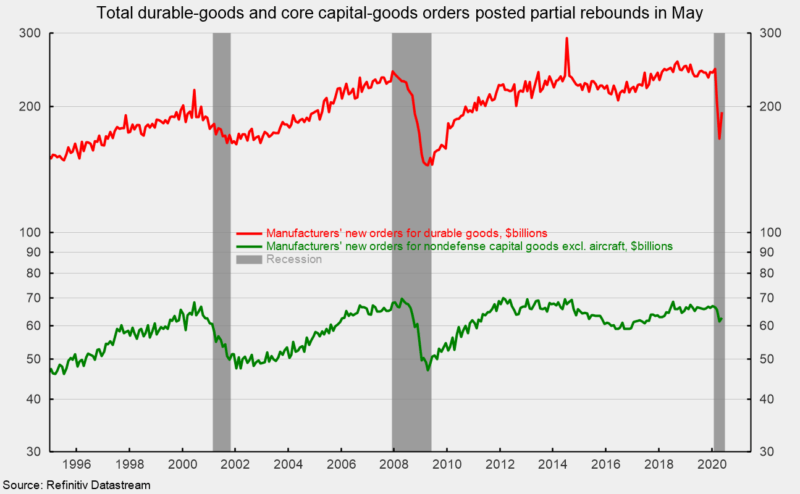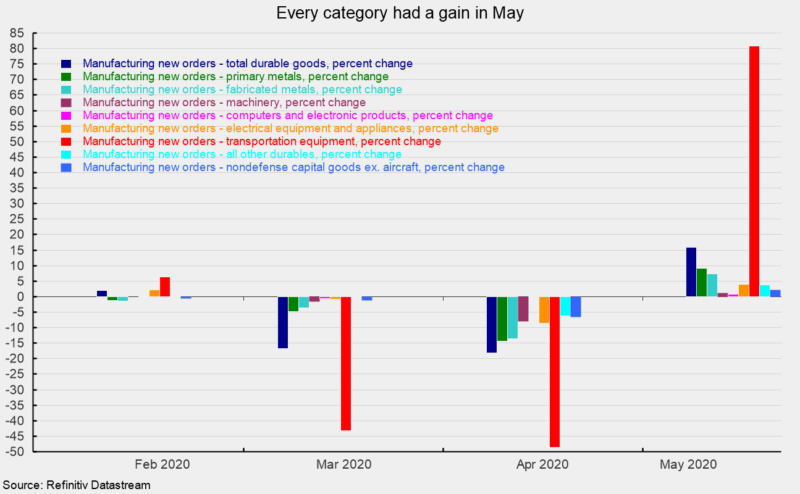Manufacturers’ New Durable-Goods Orders Rebound in May
New orders for durable goods staged a partial rebound in May, rising 15.4 percent following declines of 18.1 percent in April and 16.7 percent in March. If transportation equipment is excluded, new orders for durable goods increased 4.0 percent in May following an 8.2 percent fall in April and a 1.8 percent decline in March. Durable-goods orders had been holding above the $200 billion level since April 2011 before posting sharp declines in March and April (see first chart). New orders for May totaled $194.4 billion, about 3 percent shy of the $200 billion level.
New orders for nondefense capital goods excluding aircraft, a proxy for business equipment investment, rose 2.3 percent in May following drops of 6.5 percent in April and 1.3 percent in March. This key category had been trending flat since mid-2018, hovering in the $65 to $70 billion range. The $61.3 billion pace for April was the slowest since August 2017 but the May gain puts the level back up to $62.7 billion (see first chart).
The major categories of durable goods shown in the report all posted gains in the latest month. Among the individual categories, primary metals rose 9.1 percent, fabricated metal products gained 7.4 percent, machinery orders were up 1.1 percent, computers and electronic products increased 0.7 percent, electrical equipment and appliances added 3.9 percent, transportation equipment orders surged 80.7 percent, and the catch-all “other durables” category was up 3.8 percent (see second chart).
Within the transportation category, motor vehicles were up 27.5 percent while defense aircraft orders increased 6.0 percent. Nondefense aircraft orders totaled $3.07 billion following two months of net negative orders. Net negative new orders represent cancellation of previously placed orders totaling more than total new orders for the period.
The report on durable-goods orders reflects the reversal of government shutdown policies implemented in reaction to the outbreak of COVID-19. Despite massive government spending and extraordinary monetary policy efforts, the longest economic expansion in U.S. history has ended abruptly. Extraordinary damage has been caused, but as government restrictions are eased, signs of healing are beginning to emerge.







